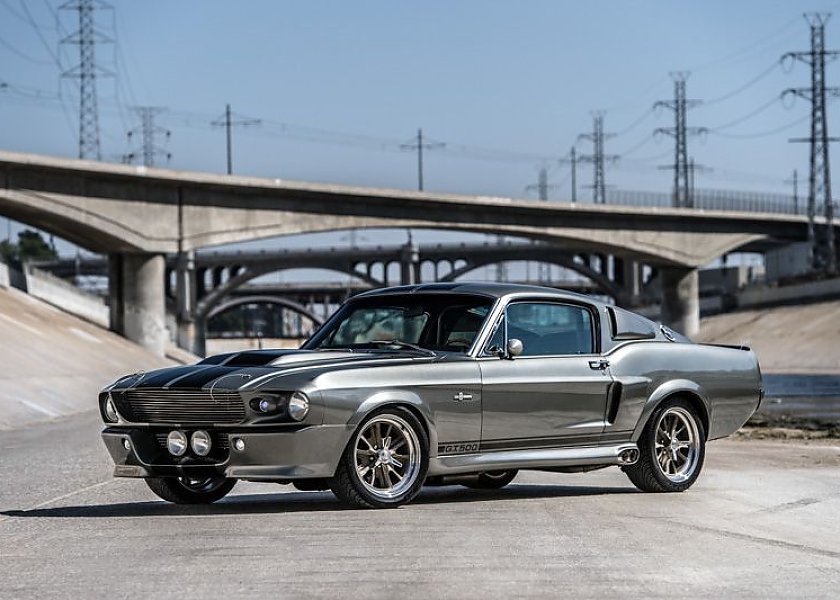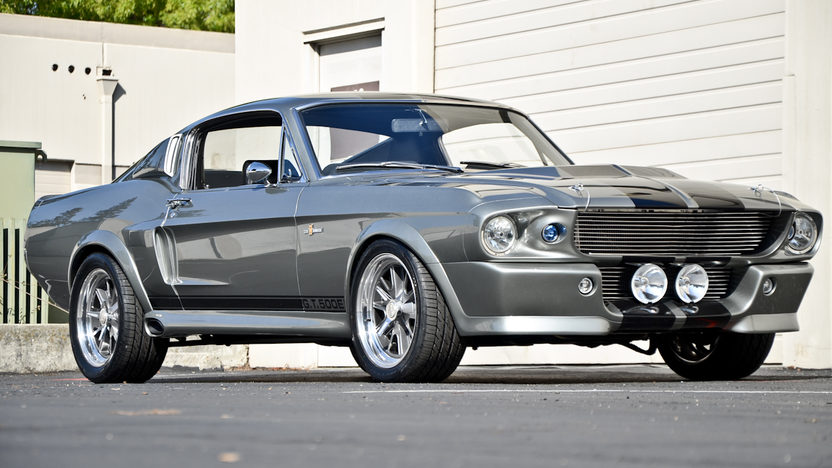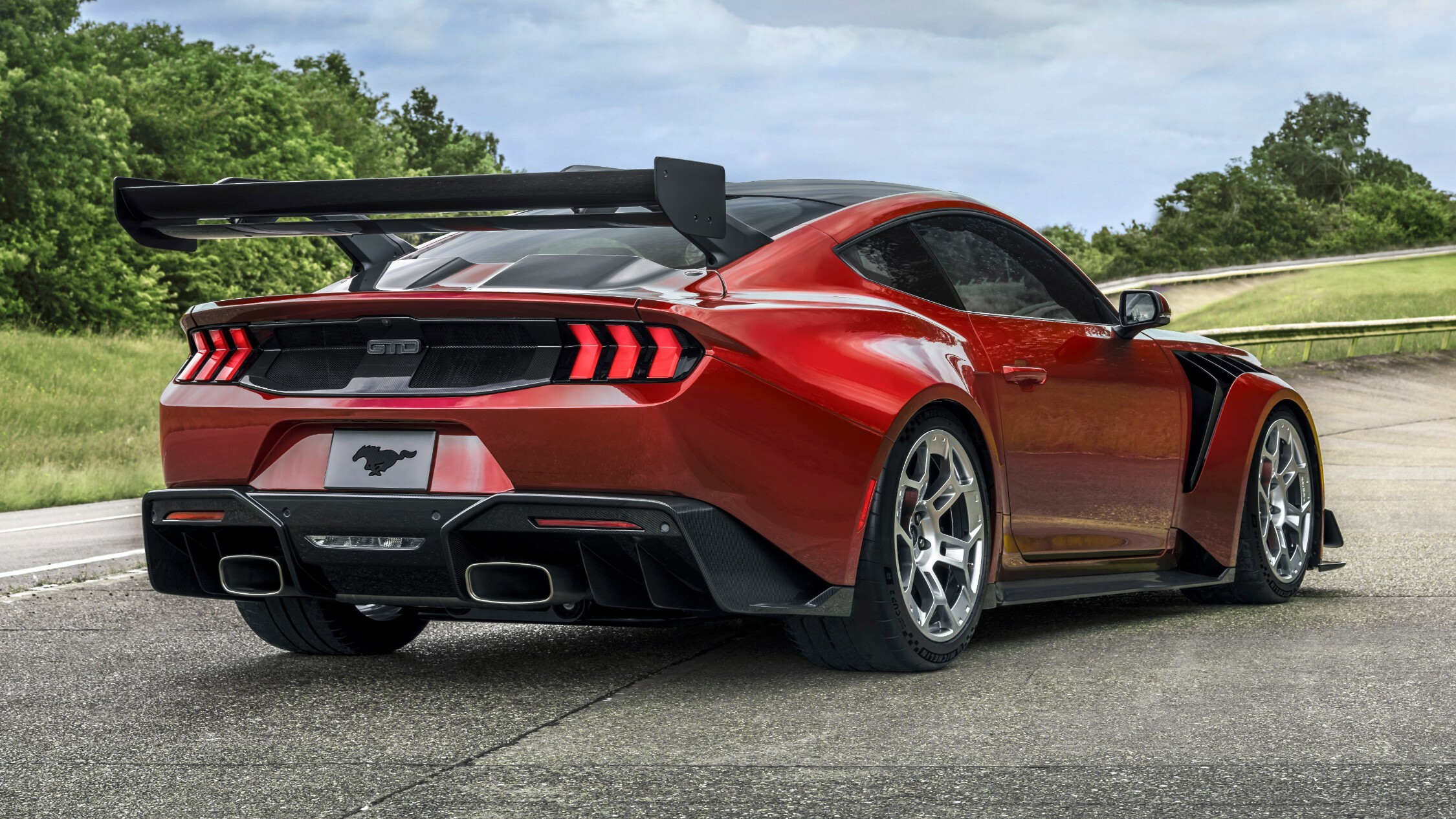The Eleanor Mustang is named after its codename in the 1974 film Gone in 60 Seconds. The name was carried over to the 2000 remake, where the car became an iconic symbol of muscle and speed.
The Eleanor Mustang is one of the most recognizable cars in automotive and cinematic history. It first appeared in the 1974 film Gone in 60 Seconds, but its real fame came with the 2000 remake, where it became a symbol of muscle, speed, and power. The name “Eleanor” was first used as a codename for the car in the 1974 movie, but the 2000 film cemented its place in automotive history with its unmistakable design. So, how did the Eleanor Mustang earn such a unique name, and why has it become synonymous with speed and style?
In this detailed exploration, we will discuss the origins of the name, its cinematic significance, the legal battles that ensued, and why the Eleanor Mustang is still revered by car enthusiasts today.

Contents
The Origins of the Eleanor Name
The name “Eleanor” has become synonymous with power, speed, and cinematic legend. But how did this iconic name come to represent one of the most famous Mustangs in history? Here are the origins of the name and its connection to the Gone in 60 Seconds films.
The 1974 Film: The Birth of Eleanor
In 1974, Gone in 60 Seconds was a low-budget film that gained cult status in the years following its release. Written, directed, and produced by H.B. Halicki, the film featured a daring heist involving a fleet of cars, with the most notable being a 1971 Mustang that was referred to as “Eleanor.” This car was central to the plot of the film, and the name “Eleanor” was used by the characters in the film, especially during the critical heist scenes.
The choice of the name “Eleanor” has been the subject of much speculation. Some believe the name was chosen because it was a reference to Eleanor Roosevelt, while others feel it was simply a random name chosen by Halicki for its ease and familiarity. In the context of the film, Eleanor is more than just a car; it becomes a character in its own right, making the name unforgettable.
The 1974 version of Eleanor was a 1971 Ford Mustang Mach 1, which was heavily modified for the film. It wasn’t the iconic 1967 Shelby GT500 that later became known as the Eleanor of the 2000 remake, but it still held a special place in the hearts of car fans and movie buffs alike. The film became popular for its breathtaking car chases and stunts, with Eleanor being the star of the show.
The 2000 Remake: A New Eleanor
In 2000, Gone in 60 Seconds was remade, this time produced by Jerry Bruckheimer and starring Nicolas Cage. The new film featured a completely different Eleanor: a 1967 Shelby GT500 Mustang. This new version of Eleanor had a sleeker, more aggressive look, thanks to a custom body kit designed by Steve Stanford and built by Chip Foose. The car featured a Pepper Grey paint job, black racing stripes, and unique modifications that gave it a distinctive and powerful appearance.
The decision to keep the name “Eleanor” in the 2000 remake was intentional, as it paid homage to the original film while also updating the Mustang for a new generation. The new Eleanor Mustang became an instant icon, known for its combination of beauty and raw power. This car’s design and performance made it one of the most iconic muscle cars to ever grace the big screen.
The Eleanor from the 2000 film was made up of a combination of 11 real cars and several replicas. Some of the cars were used for close-ups, while others were used for stunts, particularly the high-speed chases. The 2000 version of Eleanor was not only a nod to the 1974 version but also an updated, modernized version that resonated with audiences for its muscle, performance, and cinematic history.
The Legal Battle Over Eleanor
The Eleanor Mustang’s fame didn’t come without controversy. As the car became an icon, legal disputes over its name and the rights to its likeness led to years of courtroom drama. Let’s dive into the key legal battles that shaped the legacy of the Eleanor Mustang.
Denice Halicki’s Claims
After H.B. Halicki’s death in 1989, his widow, Denice Halicki, inherited the rights to the original Gone in 60 Seconds film, including the rights to the name “Eleanor” and the Mustang used in the film. Denice claimed that the name “Eleanor” was a unique character and should be protected under copyright law. This led to a series of legal battles, especially when replicas of the Eleanor Mustang started to be produced.
In the years that followed, Denice Halicki took legal action against those who were producing unauthorized replicas of the Eleanor Mustang, arguing that the car and its name were part of the intellectual property she owned. This claim eventually led to legal disputes with several parties involved in the production of replicas.
The Shelby Lawsuit and Court Ruling
One of the most significant legal battles occurred in 2008, when Denice Halicki sued Carroll Shelby Licensing for producing Eleanor replicas without her permission. Shelby, the company responsible for the design and licensing of the Shelby Mustang, had built several vehicles that closely resembled the Eleanor from the 2000 film.
In 2012, a court ruling sided with Halicki, granting her exclusive rights to the name “Eleanor” and preventing the sale of unauthorized replicas. However, this decision was later appealed, and in 2022, the Ninth Circuit Court of Appeals ruled that “Eleanor” was not a character deserving of copyright protection. The court found that Eleanor was merely a prop in the films and not a character with enough unique attributes to warrant intellectual property rights. This ruling effectively opened the door for the production of Eleanor replicas without legal consequences.
Eleanor in Popular Culture
The Eleanor Mustang has transcended its cinematic origins to become a cultural symbol. Its influence extends beyond the silver screen, inspiring car enthusiasts and designers worldwide. Let’s explore how this iconic car has left its mark on popular culture.
A Symbol of American Muscle
The Eleanor Mustang has transcended its role as a film prop and become a symbol of American muscle. The Mustang, in general, has always been associated with power, speed, and ruggedness, and the Eleanor version amplifies all these qualities. The 1967 Shelby GT500 Mustang, with its combination of design, power, and performance, became the epitome of what an American muscle car should be.
Eleanor’s role in Gone in 60 Seconds added another layer to this legacy. The car’s high-speed chases and daring escapes made it a central character in the film, allowing viewers to see the full extent of its capabilities. Eleanor’s role in these action-packed scenes only increased its popularity, making it one of the most famous muscle cars in cinematic history.
Influence on Automotive Design
Since its release, the Eleanor Mustang has had a lasting impact on automotive design. The distinctive styling of the 1967 Shelby GT500, combined with the custom modifications featured in the 2000 film, has influenced car enthusiasts and builders. Many replicas have been created, some even made by professionals, while others have been built by passionate fans who want to own a piece of cinematic history.
The Eleanor Mustang’s influence on the world of custom cars has only grown over the years. Custom body kits, parts, and accessories that mimic Eleanor’s unique look are still in production today, further cementing its status as a cultural icon.

Frequently Asked Questions
Here are some FAQs about the name of Eleanor Mustang –
1. What year is the Eleanor Mustang?
The Eleanor Mustang featured in the 2000 film Gone in 60 Seconds is a 1967 Shelby GT500, modified to give it a unique and aggressive look.
2. Who owns the original Eleanor Mustang?
The original Eleanor Mustang from the 1974 film is owned by Denice Halicki, the widow of the original film’s producer, H.B. Halicki.
3. Why is the Eleanor Mustang so iconic?
The Eleanor Mustang is iconic because it represents the perfect fusion of automotive power and film history. It became famous after its role in Gone in 60 Seconds, where it was a symbol of speed, power, and American muscle.
4. How many Eleanor Mustangs were used in the 2000 film?
A total of 11 Eleanor Mustangs were used in the 2000 film Gone in 60 Seconds, with only a few surviving today.
5. Can I build my own Eleanor Mustang replica?
Yes, after the 2022 court ruling, individuals are legally allowed to build their own Eleanor Mustang replicas without facing legal consequences.
Conclusion
The Eleanor Mustang has become a legend in the world of cars and films. From its humble beginnings in the 1974 Gone in 60 Seconds film to its place as a Hollywood icon in the 2000 remake, Eleanor’s journey has been anything but ordinary. Despite the legal battles over its name and the question of whether it deserves copyright protection, the Eleanor Mustang remains a powerful symbol of American muscle and film history.
It has inspired countless car enthusiasts, film lovers, and builders to recreate this iconic vehicle, making it one of the most recognized cars in the world.




